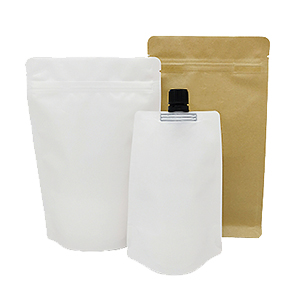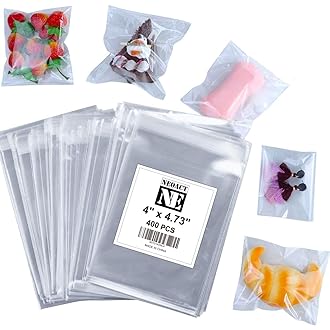In today’s environmentally conscious world, consumers are increasingly demanding sustainable and eco-friendly products, and that includes the packaging they come in. This article is a must-read for any business owner looking to reduce their environmental impact and appeal to a growing market of eco-minded consumers. We’ll delve into various sustainable packaging options, explore their benefits, and show how making the switch can not only help the planet but also boost your brand image and bottom line. Switching the plastic by eco-friendly packaging material will help improve your bussiness.
1. What is Sustainable Packaging, and Why Does it Matter?
Sustainable packaging, also known as eco-friendly or green packaging, refers to the design, manufacturing, and use of packaging materials that minimize their environmental impact throughout their entire lifecycle. This includes everything from the sourcing of raw materials to the end-of-life disposal of the packaging material. It prioritizes the use of recycled materials, renewable resources, and biodegradable or compostable options, aiming to reduce waste, conserve resources, and minimize pollution.
Why is this crucial? Traditional plastic packaging contributes significantly to pollution, overflowing landfills, and harming wildlife. Consumers are increasingly aware of this issue, and many are actively seeking out businesses that demonstrate a commitment to sustainable practices. Adopting sustainable packaging solutions not only reduces your company’s carbon footprint but also enhances your brand image, attracts environmentally conscious customers, and can even lead to long-term cost savings. The less plastic we have, the less waste we will have.
2. Is Recycled Packaging Really Eco-Friendly?
Recycled packaging, made from recycled materials like paper, cardboard, and plastic, is often touted as an eco-friendly solution. But is it really as green as it seems? The answer is a resounding "yes," but with some important caveats.
Recycle saves energy. Using recycled materials significantly reduces the energy required to manufacture new packaging compared to starting from virgin resources.
Recycle helps conserve resources. It lessens the demand for raw materials like trees and fossil fuels.
Recycle helps reducing Landfill Waste. Recycling diverts materials from landfills, where they can take centuries to decompose.

However, it’s essential to understand that not all recycled packaging is created equal. The recyclability of a material depends on local infrastructure and collection programs. Furthermore, some materials can only be recycled a limited number of times before their quality degrades. Therefore, while recycled packaging is undoubtedly a step in the right direction, it’s crucial to choose options that are genuinely recyclable in your target markets and consider the overall lifecycle impact.
3. What Are the Benefits of Compostable Packaging?
Compostable packaging takes sustainability a step further than recyclable options. These materials are designed to break down completely into natural elements (carbon dioxide, water, and biomass) in a composting environment, either in a home compost bin or an industrial composting facility.
The benefits of compostable packaging are numerous:
- Reduces Landfill Waste: Instead of lingering in landfills for centuries, compostable materials return to the earth as nutrient-rich compost.
- Enriches Soil: The resulting compost can be used to improve soil health, reducing the need for chemical fertilizers.
- Lowers Carbon Footprint: Composting often generates fewer greenhouse gas emissions than landfilling.

However, it’s crucial to note that compostable packaging requires specific conditions to break down properly. Simply throwing it in the trash won’t achieve the desired result. Clear labeling and consumer education are essential to ensure that compostable materials end up in the right place – a compost bin or an industrial composting facility. There are 2 types of compost: home and industrial.
4. How Can Biodegradable Materials Reduce Your Environmental Footprint?
Biodegradable materials are often confused with compostable materials, but there’s a key difference. While all compostable materials are biodegradable, not all biodegradable materials are compostable. Biodegradable simply means that a material can be broken down by microorganisms (bacteria, fungi) into natural substances. However, the timeframe and conditions for this breakdown are not always specified.
While biodegradable sounds appealing, it’s important to be cautious. Some biodegradable plastics, for example, may only break down into smaller pieces of plastic (microplastics) under specific conditions, which can still be harmful to the environment. It’s crucial to look for certifications and standards that specify the timeframe and conditions for biodegradation to ensure that the material truly breaks down into harmless substances.
Biodegradable is another step to reducing the environmental impact.
5. Beyond Plastic: Exploring Innovative Alternatives to Plastic
The search for sustainable alternatives to traditional plastic packaging has led to some exciting innovations. Here are a few examples:
- Kraft Paper: Made from wood pulp, kraft paper is a renewable resource that is both recyclable and biodegradable. It’s a versatile material used for bags, wrapping, and even some types of food packaging.
- Corrugated Cardboard: This ubiquitous material, made from layers of kraft paper, is highly recyclable and often made from recycled materials itself. It’s ideal for shipping boxes and protective packaging.
- Biodegradable packing peanuts: Is a loose-fill packaging material used to prevent damage to fragile objects during shipping.
These alternatives to plastic offer a range of benefits, from reducing reliance on fossil fuels to minimizing waste and pollution.
Some alternatives may be the following:
* Reducing your packaging.
* Use plant-based packaging.
* Edible packaging.
* Plantable packaging.
* Use recycled cardboard and paper.6. How Does Mushroom Packaging Work?
Mushroom packaging, also known as mycelium packaging, is a truly revolutionary eco-friendly packaging solution. It’s made from agricultural waste (like hemp hulls or wood chips) and mycelium, the root structure of mushrooms. The mycelium grows around the waste material, binding it together into a solid, lightweight, and compostable material.
The process is remarkably sustainable:
- Agricultural waste is mixed with mycelium.
- The mixture is placed in molds.
- The mycelium grows, filling the mold and binding the waste material.
- The resulting material is dried, creating a strong and biodegradable packaging product.
Mushroom packaging is not only compostable but also incredibly versatile. It can be molded into various shapes and sizes, making it suitable for everything from protective packaging to food containers.
7. What Are the Advantages of Cornstarch Packaging?
Cornstarch packaging is another plant-based alternative to traditional plastic. It’s made from polylactic acid (PLA), a polymer derived from cornstarch or other renewable resources like sugarcane. PLA is biodegradable and compostable under specific conditions (typically in industrial composting facilities).
Cornstarch packaging offers several advantages:
- Renewable Resource: It’s made from plants, reducing reliance on fossil fuels.
- Compostable: Under the right conditions, it breaks down into natural substances.
- Versatile: It can be used for a variety of applications, including food containers, cups, and films.

However, it’s important to note that PLA typically requires high temperatures and specific microorganisms to break down, meaning it’s not always suitable for home composting. Also, the production of cornstarch can have environmental impacts related to land use and agricultural practices.
8. Is Seaweed Packaging a Viable Solution for the Future?
Seaweed packaging is a relatively new but incredibly promising sustainable alternative to plastic. It’s made from extracts of seaweed, a rapidly renewable resource that doesn’t require land, freshwater, or fertilizers to grow. Seaweed packaging is not only biodegradable but also edible in some cases!
The potential benefits are significant:
- Rapidly Renewable: Seaweed grows incredibly quickly, making it a highly sustainable resource.
- Biodegradable and Compostable: It breaks down quickly and naturally, even in home compost bins.
- Edible Films: Some seaweed packaging can be used to create edible films for food products, eliminating waste altogether.
While seaweed packaging is still in the early stages of development, it holds tremendous potential as a truly sustainable and innovative packaging solution for the future.
9. How Can Businesses Successfully Implement Sustainable Packaging Solutions?
Switching to sustainable packaging requires a thoughtful and strategic approach. Here’s a step-by-step guide for businesses:
- Assess Your Current Packaging: Analyze your current packaging materials, their environmental impact, and their costs. Identify areas where you can make improvements. Consider switching to our Soft Services Packaging Accordion Pouch Bags as a starting point for a more sustainable option.
- Set Clear Goals: Define your sustainability goals. Do you want to reduce your carbon footprint, minimize waste, or use only compostable materials?
- Research Your Options: Explore the various eco-friendly packaging materials available, considering their suitability for your products, your budget, and your target market.
- Choose the Right Materials: Select packaging materials that align with your goals and meet your specific needs. For example, if you’re in the cosmetics industry, our Cosmetics Packaging Back-Sealed Pouch Bags could be an excellent choice.
- Test and Iterate: Before making a full switch, test the new packaging to ensure it protects your products effectively and meets your quality standards.
- Communicate with Your Customers: Let your customers know about your commitment to sustainability. Highlight the eco-friendly features of your packaging on your website and product labels. Consider marketing your use of sustainable options like our China Plastik Packaging Envelope Pouch.
- Partner with Suppliers: Work with packaging suppliers who specialize in sustainable options and can provide you with the expertise and support you need.
- Consider the lifecycle and durability: Think about the packaging and shipping stages, think of the transportation stage, and make sure the packaging can handle it.
By following these steps, businesses can successfully transition to sustainable packaging, reducing their environmental impact and enhancing their brand reputation.
10. What are the common types of sustainable and packaging?
There are many different types of sustainable packaging. Here are a few of the most popular options:
- Recycled paper and cardboard: This is one of the most common types of sustainable packaging. It is made from recycled materials and can be recycled again after use.
- Bioplastics: Bioplastics are made from plant-based materials, such as cornstarch or sugarcane. They are biodegradable and compostable, meaning they will break down in a landfill or compost heap.
- Mushroom packaging: Mushroom packaging is made from agricultural waste and mycelium, the root structure of mushrooms. It is biodegradable and compostable.
- Seaweed packaging: Seaweed packaging is made from extracts of seaweed. It is biodegradable, compostable, and even edible in some cases.
- Reusable Packaging:
The main goal of reusable packaging is the reuse of it. There are numerous packaging supplies to choose from.
Choosing the right type of sustainable packaging for your business will depend on a number of factors, including the type of product you sell, your budget, and your sustainability goals.
Conclusion: Key Takeaways for Sustainable Packaging
- Sustainability Matters: Consumers are increasingly demanding eco-friendly products and packaging.
- Recycled is Good, Compostable is Better: Recycled packaging reduces waste, but compostable packaging returns to the earth.
- Biodegradable Needs Clarification: Look for certifications to ensure true biodegradability.
- Innovation Abounds: Explore alternatives like mushroom packaging, cornstarch packaging, and seaweed packaging.
- Strategic Implementation is Key: Assess, plan, test, and communicate your switch to sustainable packaging.
- Look for certifications: Choose products that meet your sustainability goals.
- Choosing sustainable packaging can create a smaller environmental impact for your company.
- Remember, sustainable packaging often requires innovative packaging design.
By embracing sustainable packaging, businesses can contribute to a healthier planet, attract environmentally conscious customers, and ultimately, thrive in a more sustainable future.
Post time: 03-11-2025

